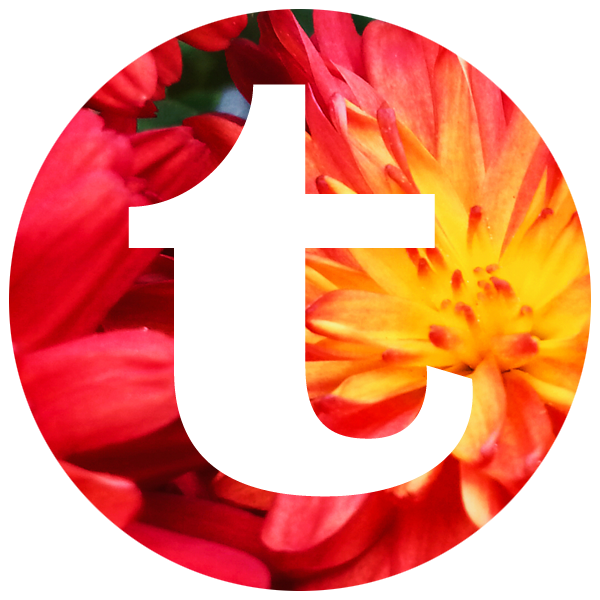Julie Blyfield’s beautiful pieces have been on my radar ever since I came across them in an exhibition of work from the Gray Street Workshop in Brisbane, during the Australian Jewellers and Metalsmiths Group conference in 2000.
She spends a lot of time observing and documenting the ephemeral forms of nature, translating them through metal and enamel, hammering sheets of silver with fine steel tools to create wonderfully tactile and patterned surfaces. These new, more permanent objects still manage to capture that essence of delicacy, rawness, and elegance; leaves, shells, seedpods and bark spring to mind.
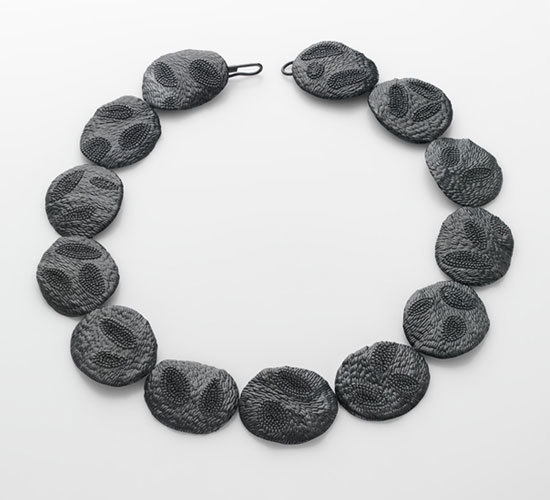
Julie Blyfield – black fossil neckpiece
She’s a big admirer of contemporary jewellers Karl Fritsch and Lucy Sarneel, and it’s easy to see their influences in her work – there’s a similar rawness and an almost haphazard collection of forms, beautifully balanced with an emphasis on texture. The late Mari Funaki, who established the fabulous Gallery Funaki in Melbourne is another person she admires, for her ability to balance her own considerable career as a jeweller while establishing a world-class gallery.
Julie is also constantly inspired by her garden, and trips to the desert and the sea.
She worked for several years as a secondary school art teacher in regional South Australia, which gave her a broad cross section of skills – printmaking, drawing, painting, photography, and jewellery-making. She continued to make jewellery in her spare time, and after returning to Adelaide, she decided to expand her skillset by undertaking further studies. She joined the jewellery collective Gray Street Workshop as an access tenant in 1985, and went on to become a partner in 1987, remaining there for 23 years.
“Working at Gray Street was very important to me as it provided me with an understanding how people work and approach their practice. I learnt a lot from working alongside other like minded contemporary jewellers who approached their work with a diverse range of materials and techniques.” (1)
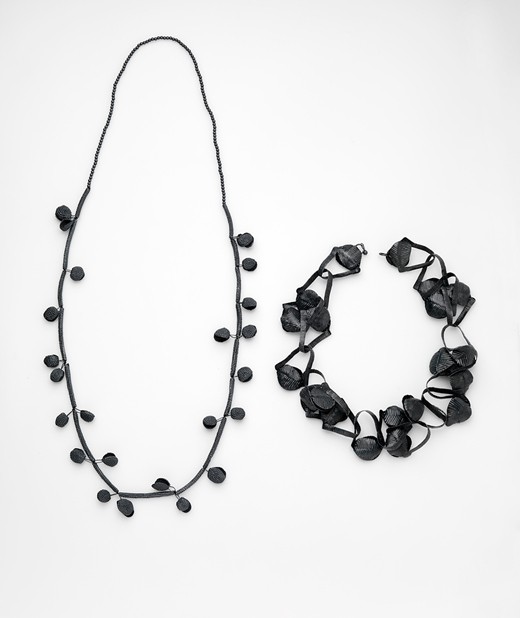
Julie Blyfield Scintilla Series – photo Grant Hancock
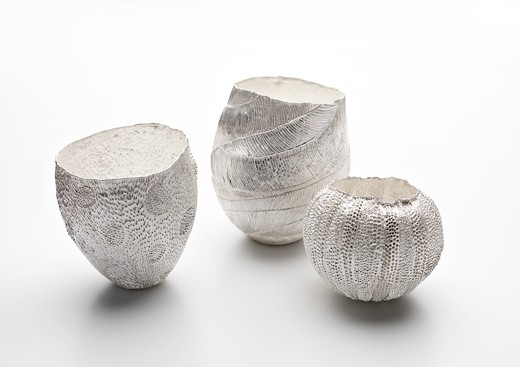
Julie Blyfield Scintilla Series – photo Grant Hancock
A mentorship with German-born Australian metalsmith Frank Bauer in 2003 was also important in honing her metal-forming skills, and in 2010, she left Gray Street to establish her own studio at home, overlooking her back garden.
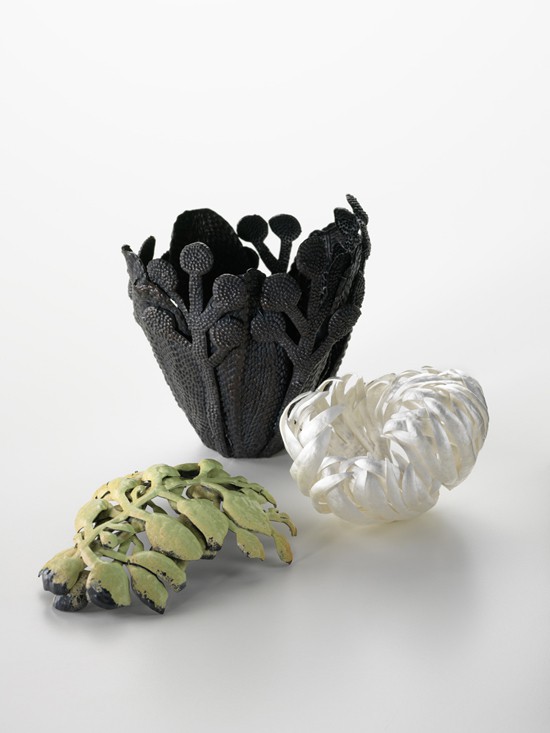
Julie Blyfield – pressed desert plants series
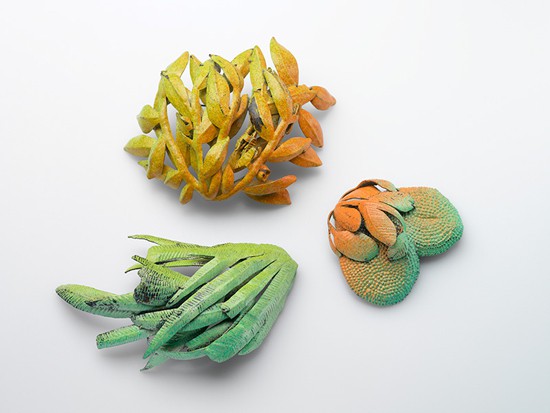
Julie Blyfield – pressed desert plants series
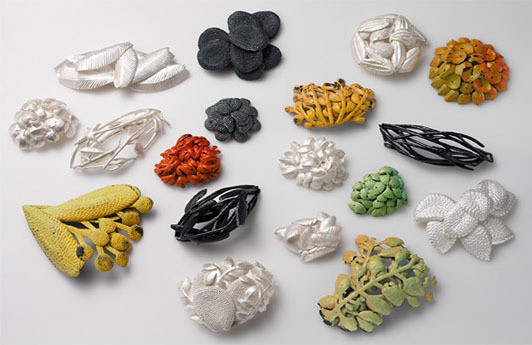
Julie Blyfield – pressed desert plants series
Julie has won numerous awards both locally and overseas, has been exhibited around the world, and is represented in many major museums, including National Gallery of Australia, Musee Des Arts Decoratifs in France, and the Victoria and Albert Museum in London.
You can find more of Julie’s graceful and sophisticated work in Gallery Funaki, Melbourne.
